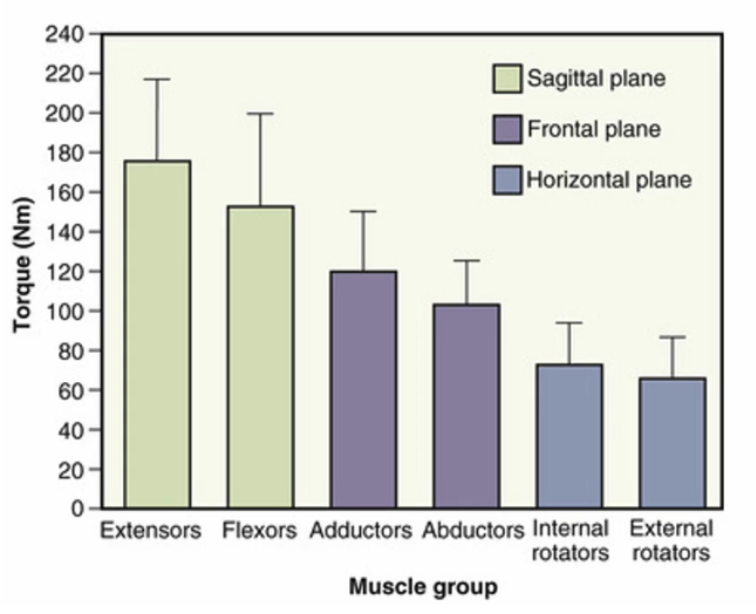C. Hip Muscles
1/72
There's no tags or description
Looks like no tags are added yet.
Name | Mastery | Learn | Test | Matching | Spaced |
|---|
No study sessions yet.
73 Terms
Primary Hip Flexors
iliopsoas
sartorius - combined hip flexion, ER, abduction
TFL
Rectus Femoris
Adductor Longus
Pectineus
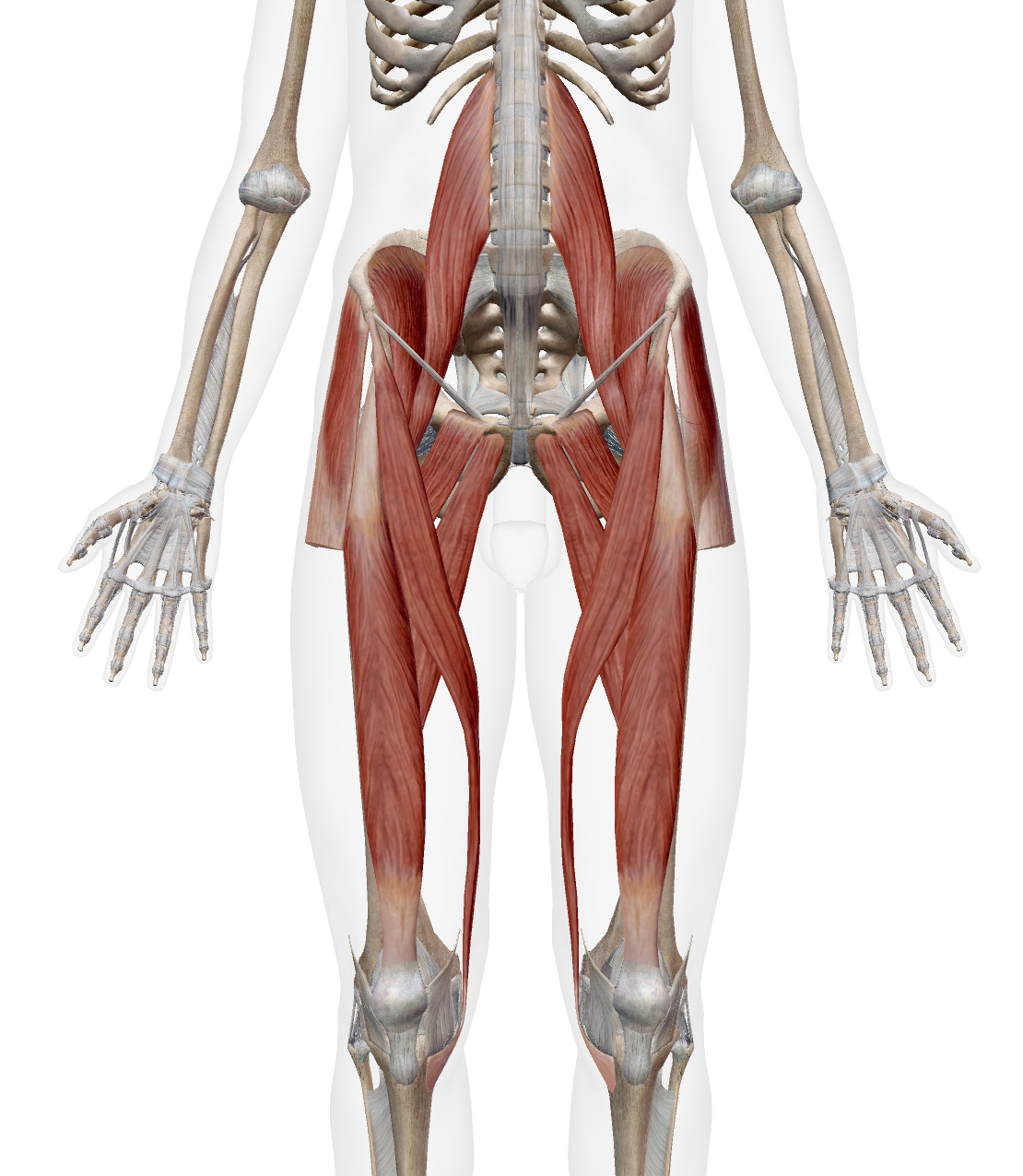
Secondary Hip Flexors
adductor brevis
gracilis
gluteus minimus (anterior fibers)
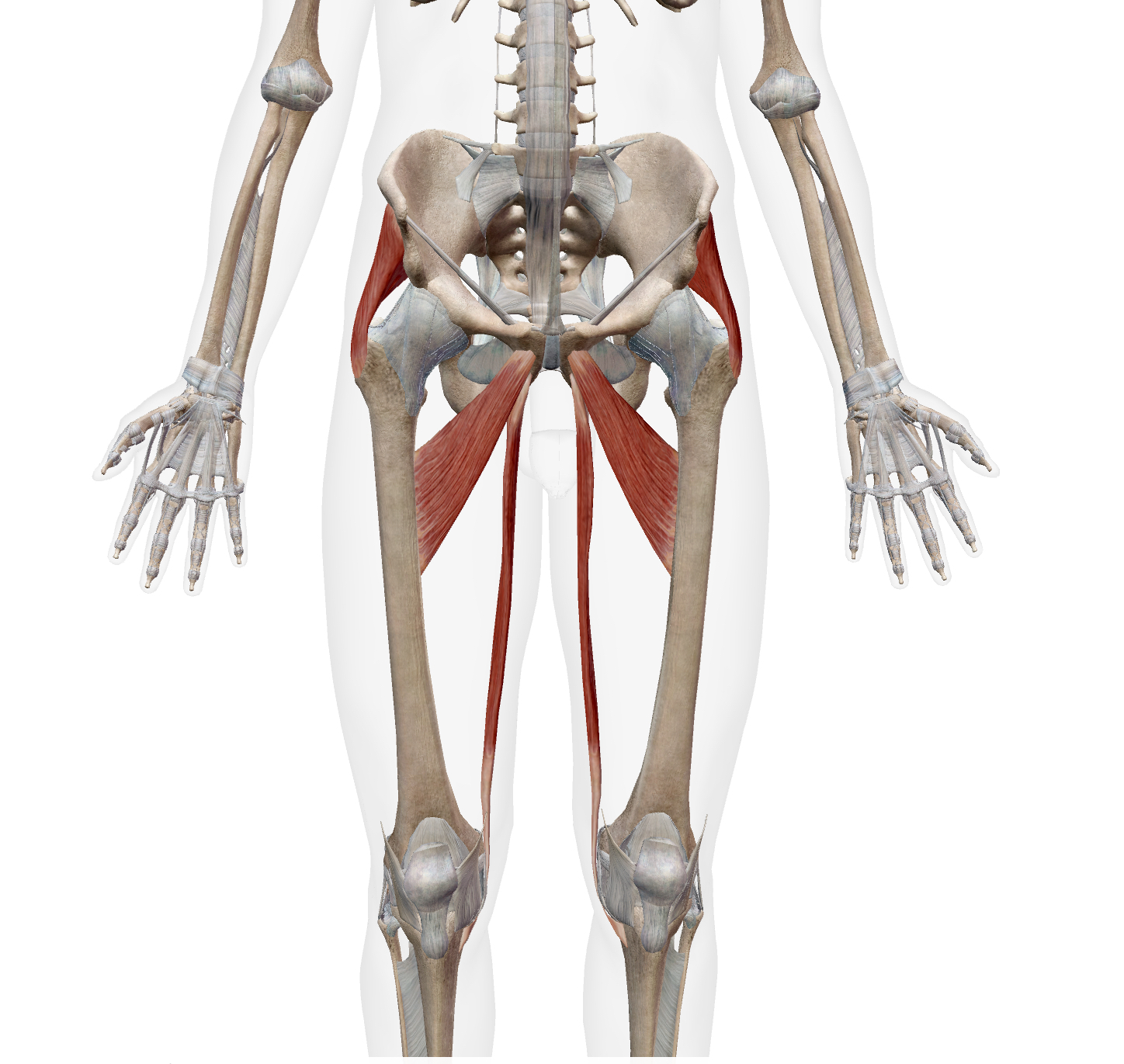
Primary Hip Adductors
Pectineus
Gracilis
adductor Longus
Adductor Brevis
adductor magnus
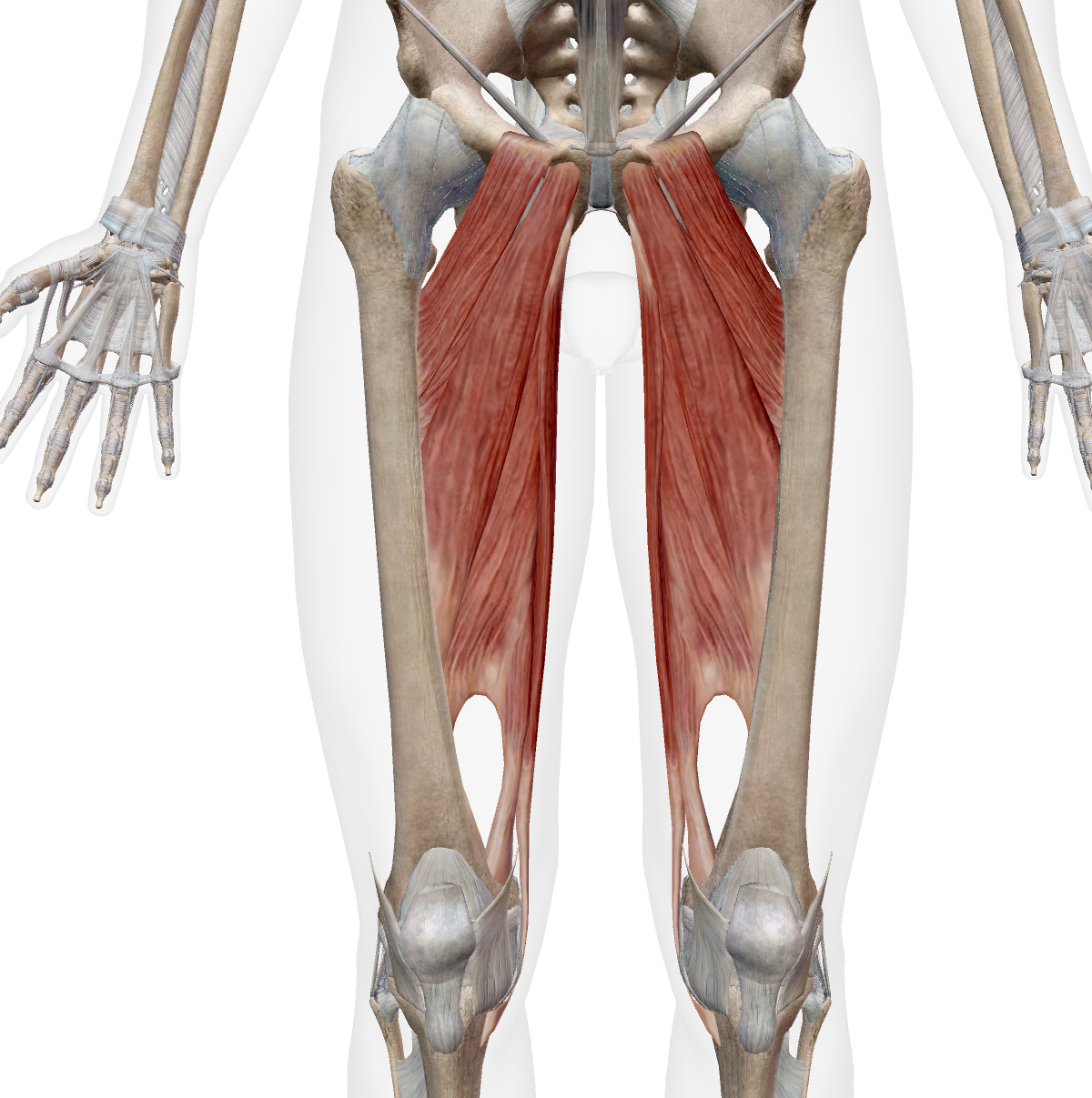
Secondary Hip Adductors
LH of Biceps Femoris
Gluteus Maximus (inferior/posterior fibers)
Quadratus Femoris
Obturator Externus
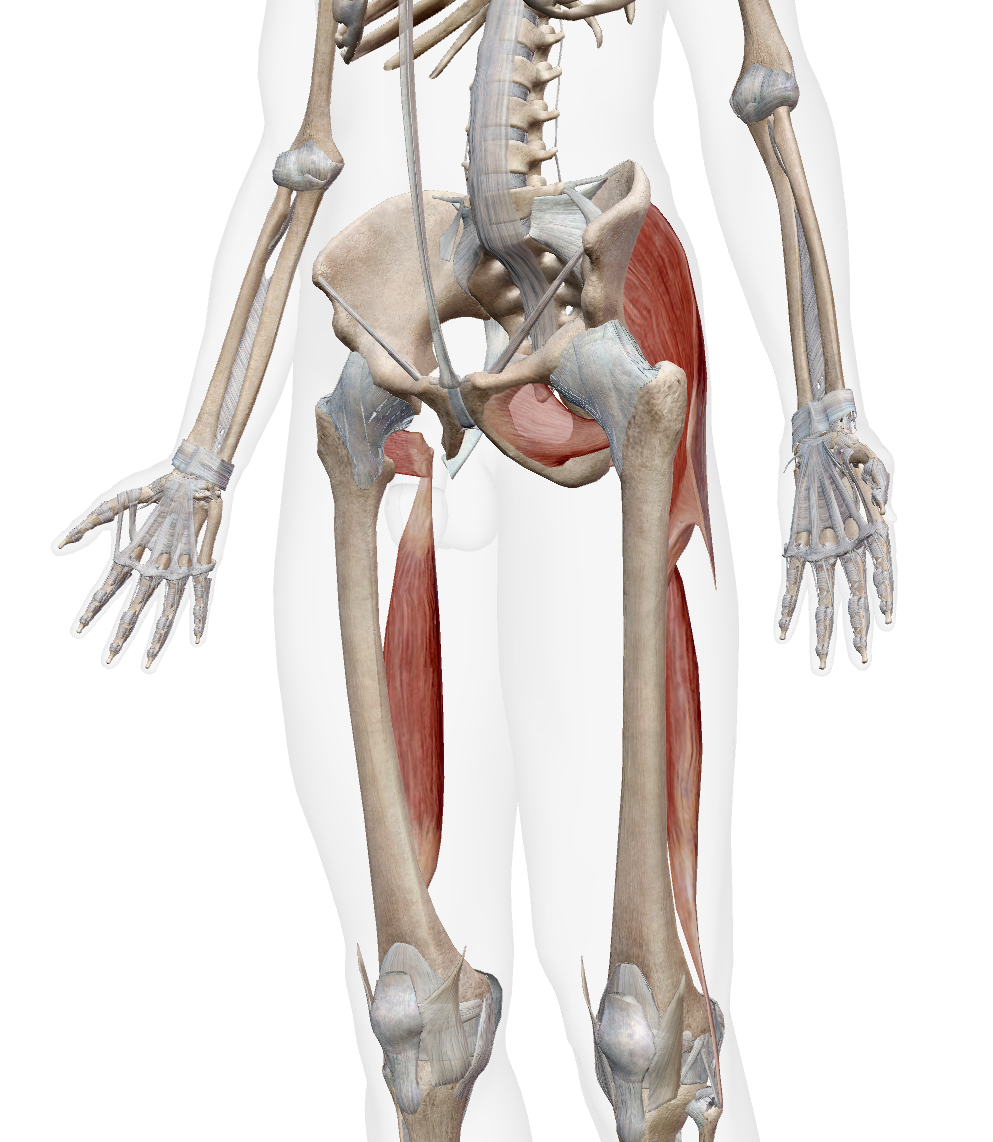
Primary Hip IRs
Don’t have any

Secondary Hip IRs
gluteus minimus & medius (anterior fibers)
TFL
Adductor Longus
Adductor Brevis
Pectineus
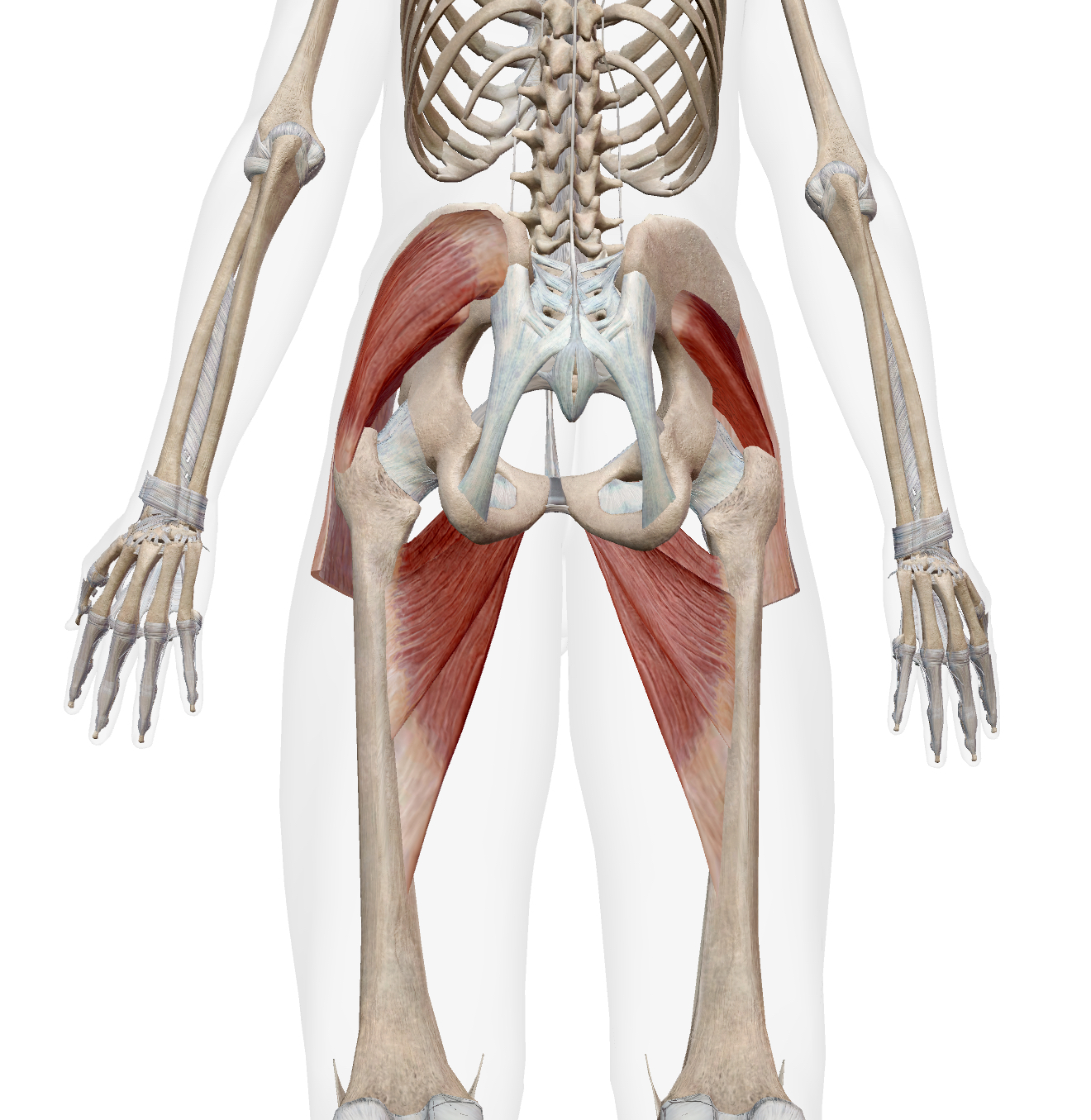
Primary Hip Extensors
gluteus maximus
biceps femoris (LH)
semitendinosus
semimembranosus
adductor magnus (posterior head)
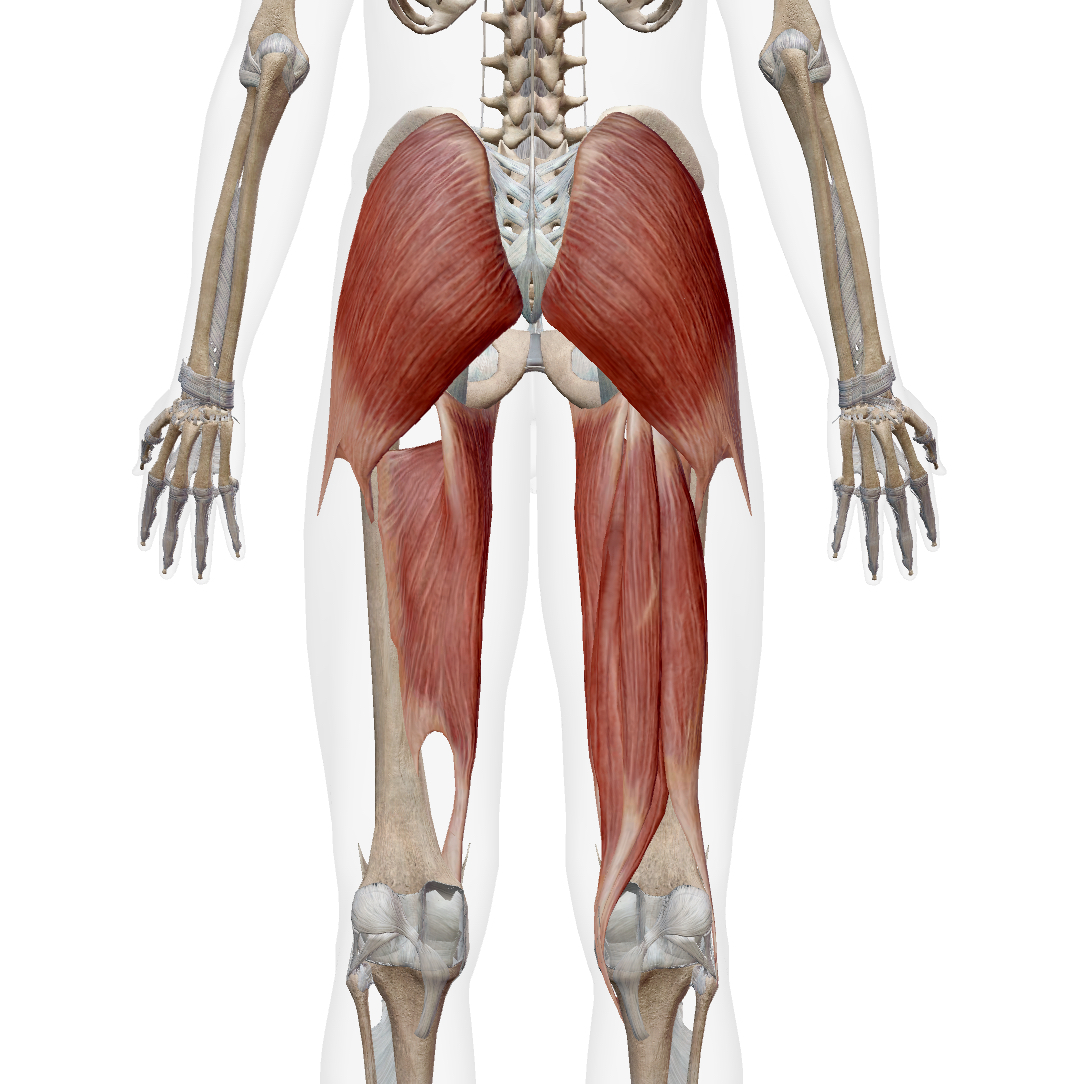
Secondary Hip Extensors
gluteus medius (middle and posterior fibers)
adductor magnus (anterior head)
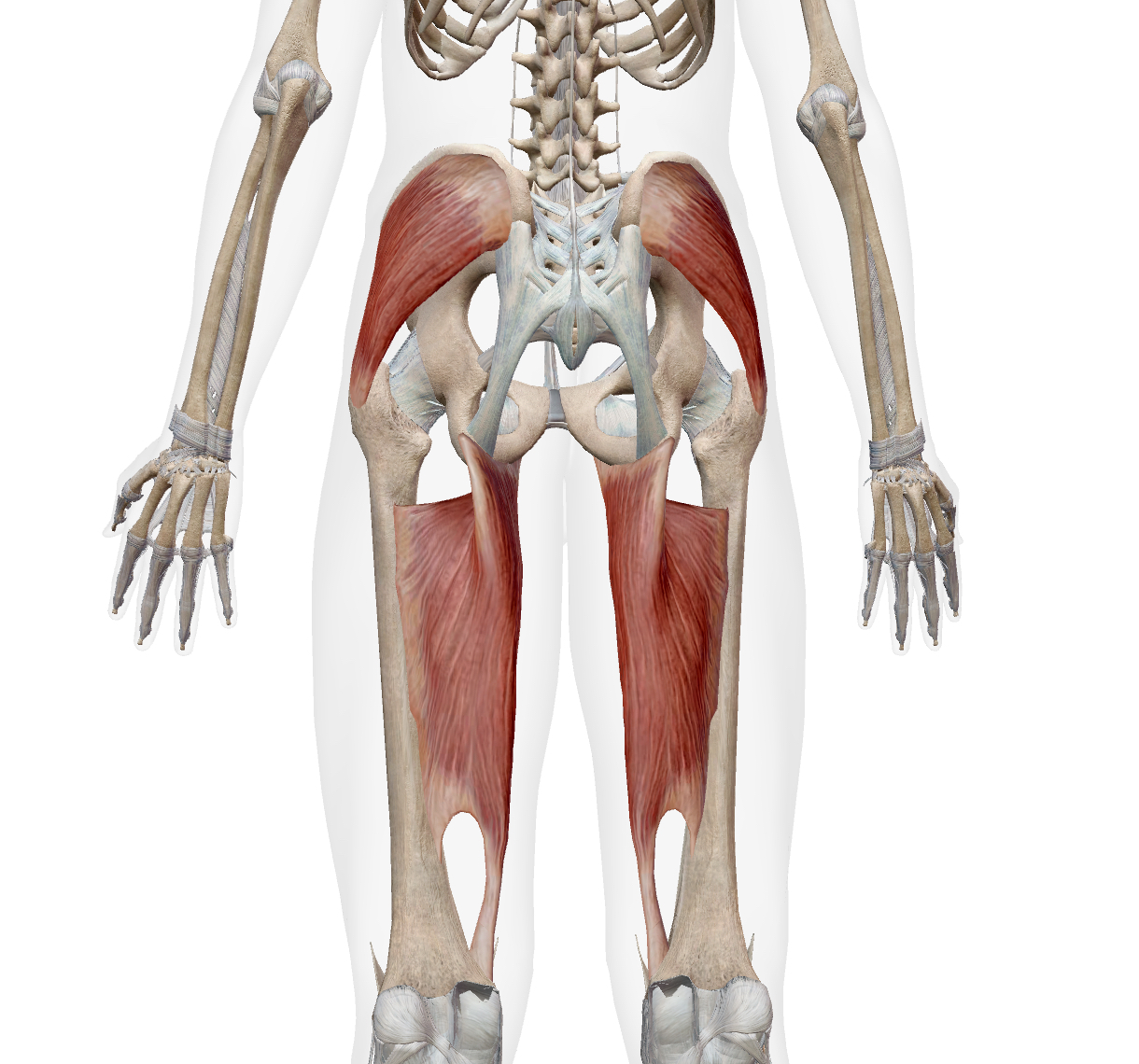
Primary Hip Abductors
gluteus medius
gluteus minimus
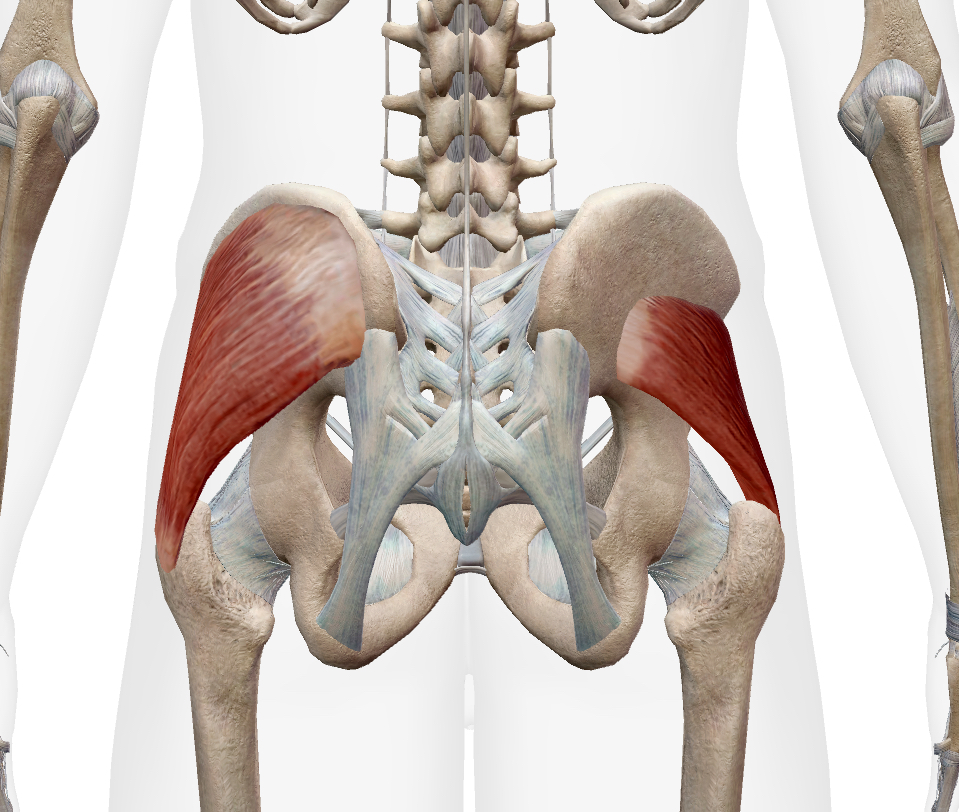
Secondary Hip Abductors
piriformis
sartorius
rectus femoris
gluteus maximus (ant/sup fibers)
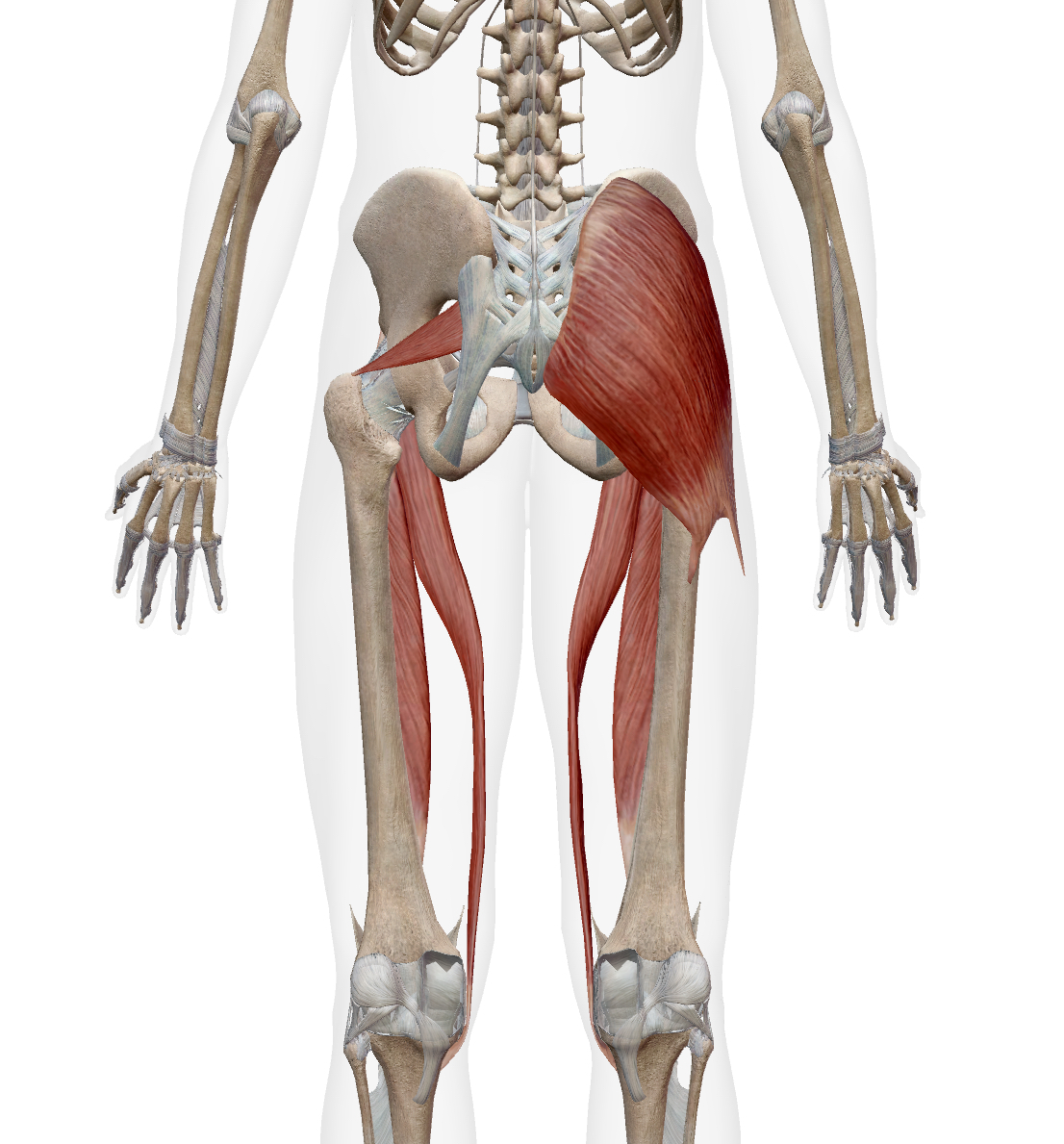
Primary Hip ERs
gluteus maximus
piriformis
obturator internus
gemellus superior
gemellus inferior
quadratus femoris
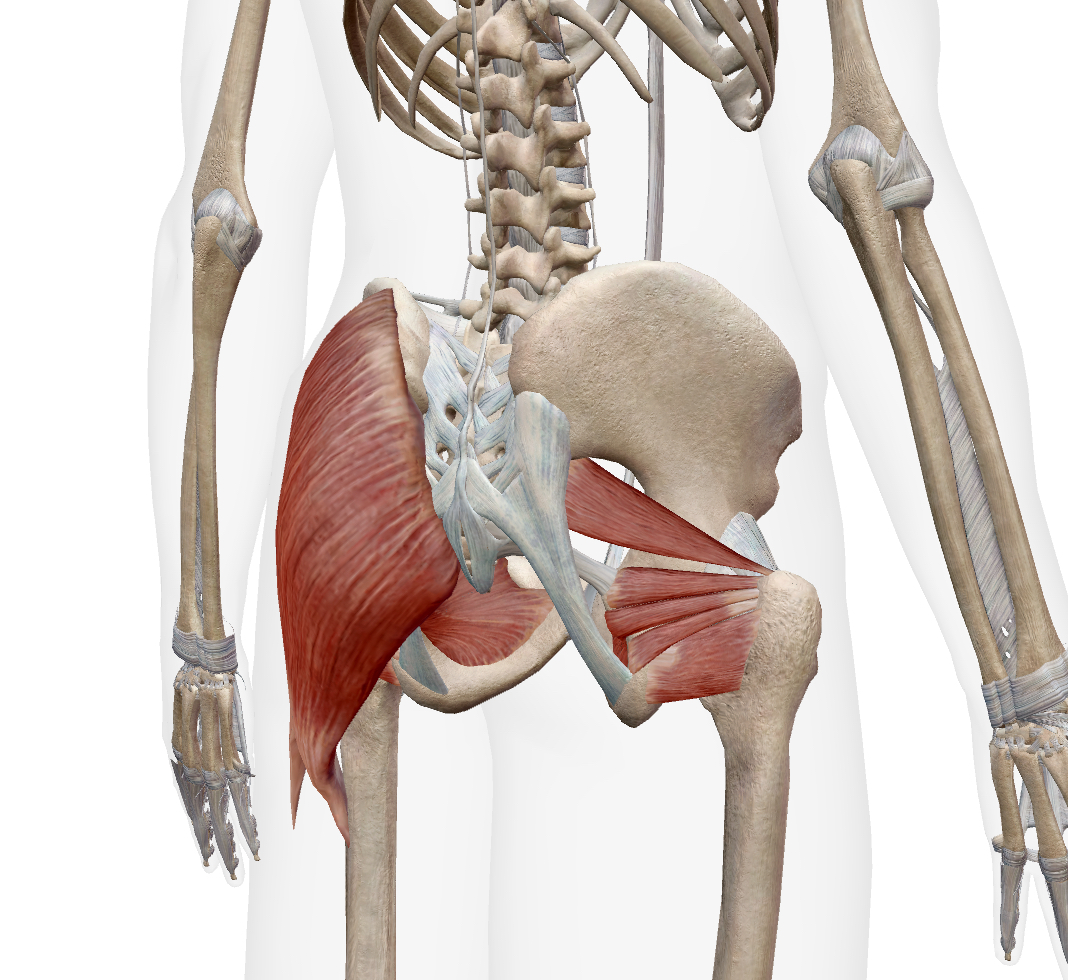
Secondary Hip ERs
gluteus medius & minimus (posterior fibers)
obturator externus
sartorius
biceps femoris (LH)
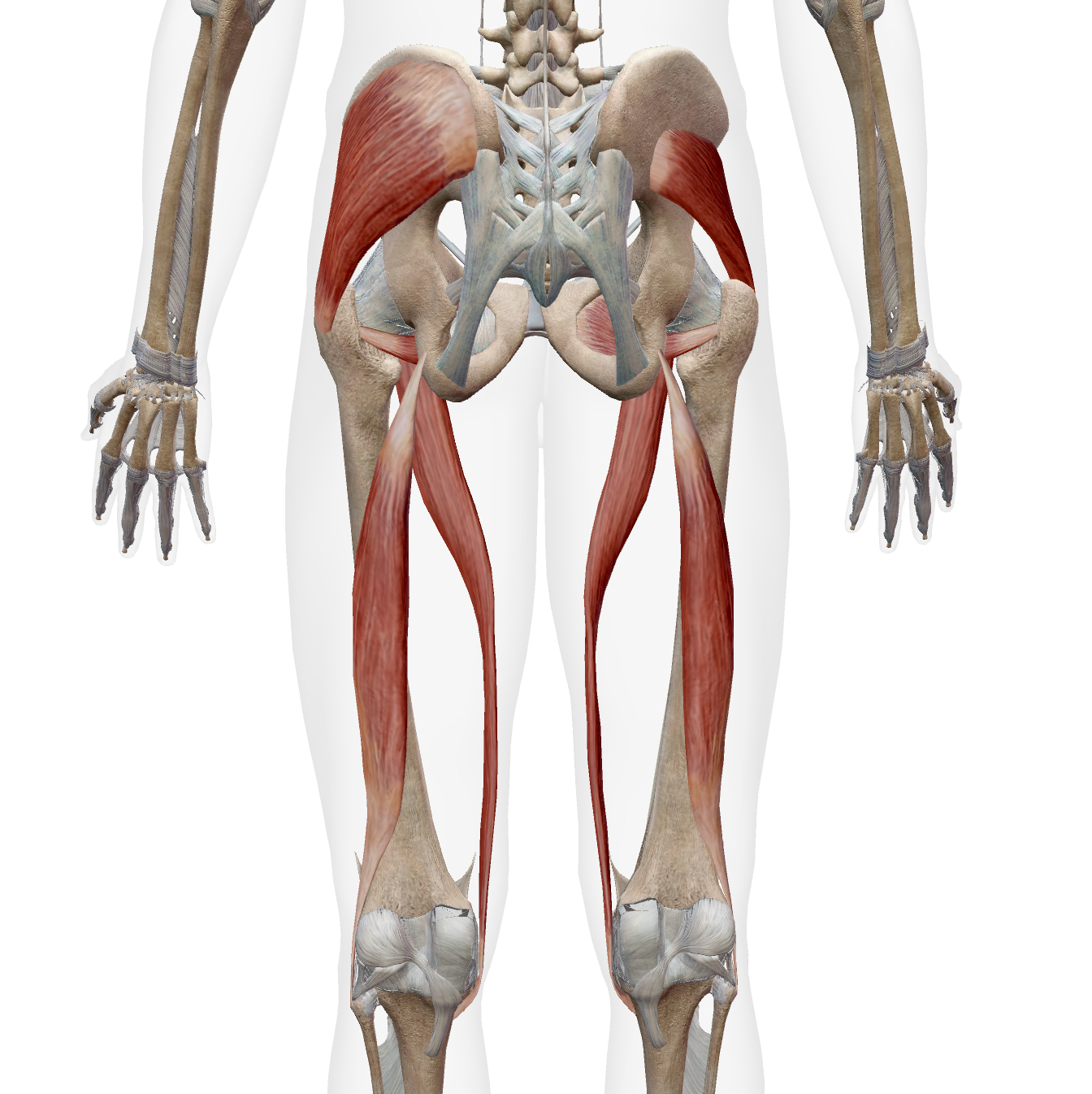
Internal Snapping Hip Syndrome
Where the iliposoas tendon snaps over the femoral head or anterior pelvis, causing a snapping sensation
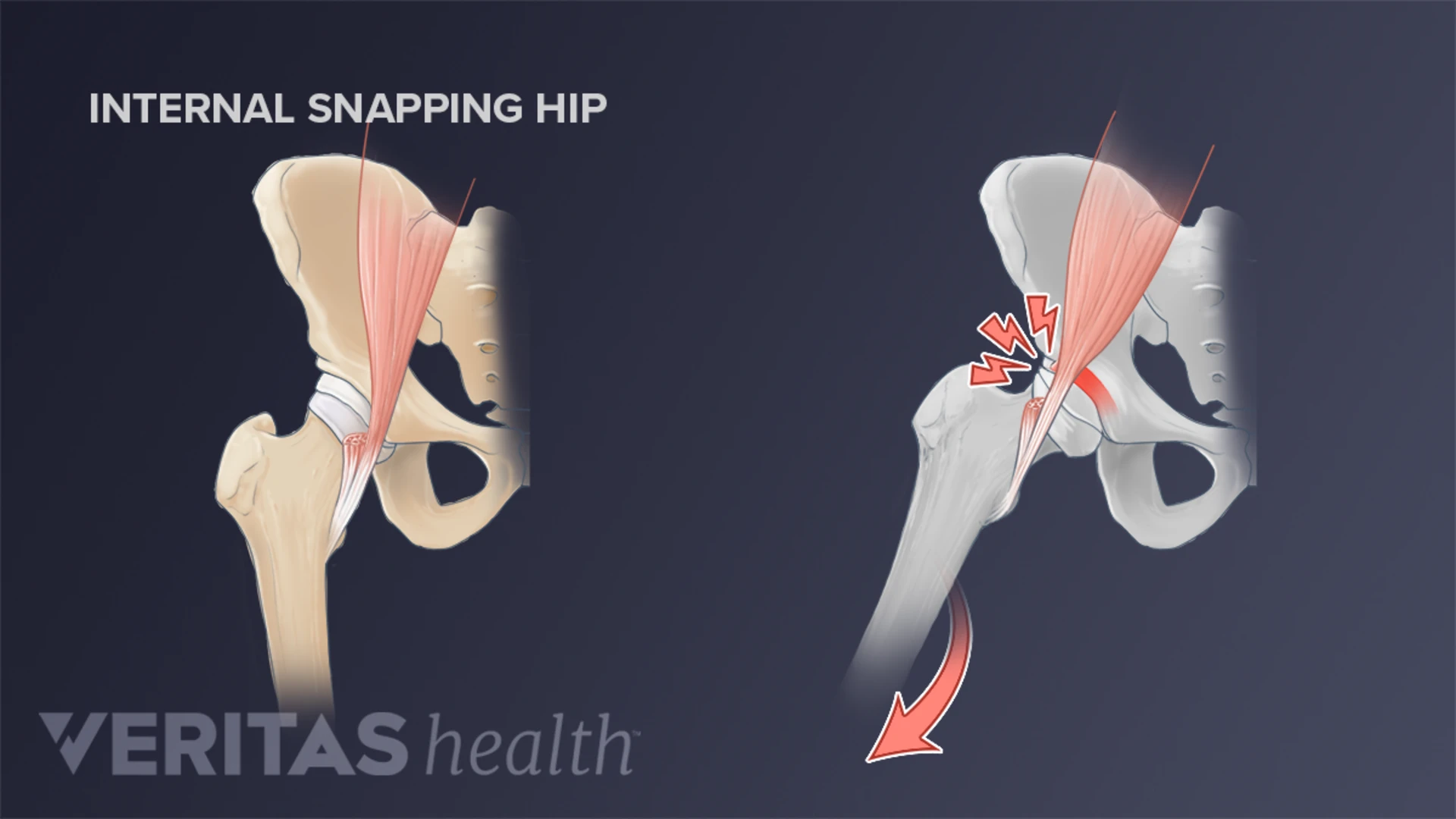
Where does Internal Snapping Hip Syndrome most commonly occur?
distal portion of the iliopsoas tendon, especially as it crosses the femoral head or anterior brim of the pelvis
Who commonly experiences Internal Snapping Hip Syndrome?
Dancers and others who perform frequent hip flexion
mnemonic: West Side Story dancers have internal need to snap and flex their hip
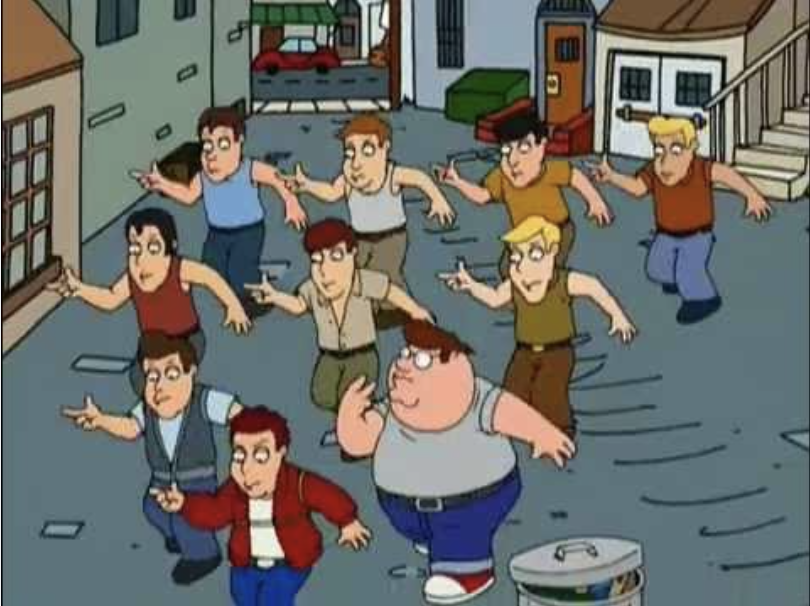
Is Internal Snapping Hip Syndrome always painful?
No, it's often benign unless it becomes painful or disabling
Internal Snapping Hip Syndrome Treatment
Surgical partial release or
Tendon lengthening to reduce mechanical irritation.
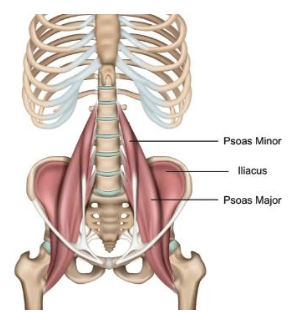
Psoas Major - Flexor
Origin
Sides of T12–L5 vertebrae and discs between them; TPs of all lumbar vertebrae
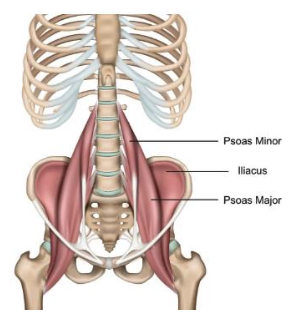
Psoas Major - Flexor
Insertion
Lesser trochanter of femur
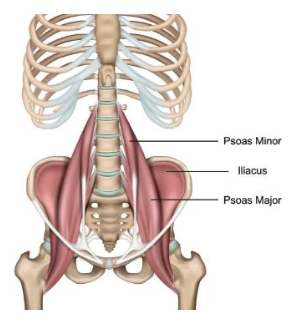
Psoas Major - Flexor
Innervation
Anterior rami of L1, L2, L3
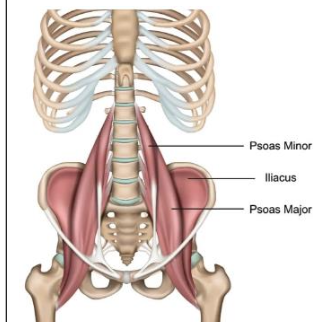
Iliacus - Flexor
Origin
iliac crest
iliac fossa
ala of sacrum
anterior sacroiliac ligaments
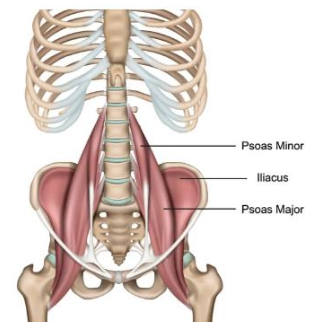
psoas major tendon
lesser trochanter
femur distal to it
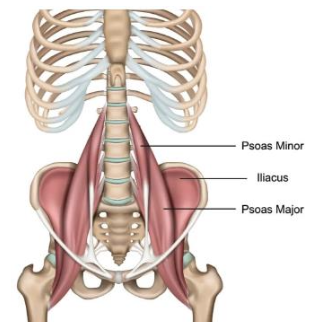
Iliacus - Flexor
Innervation
Femoral nerve (L2, L3)

Sartorius - Flexor
Origin
ASIS and superior part of notch inferior to it
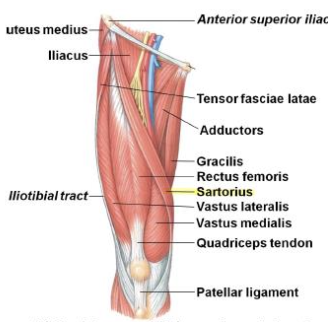
Sartorius - Flexor
Insertion
Superior part of medial surface of tibia (as part of pes anserinus)
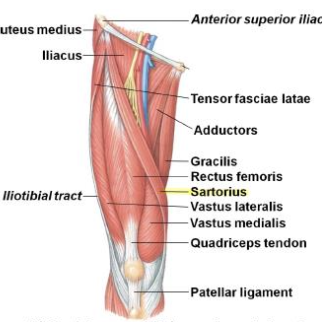
Sartorius - Flexor
Innervation
Femoral nerve (L2, L3)
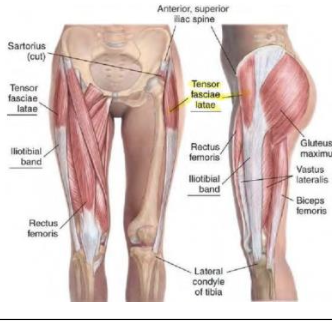
TFL - flexor
origin
ASIS
anterior part of iliac crest
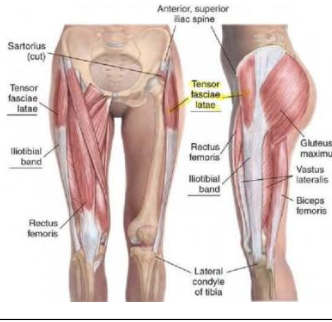
TFL - Flexor
iliotibial tract, which attaches to lateral condyle of tibia
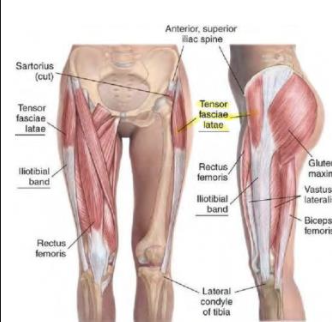
TFL - Flexor
N
superior gluteal nerve (L5, S1)
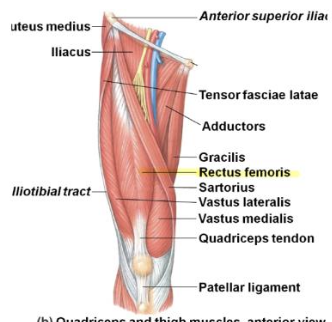
Rectus Femoris - Flexor
O
AIIS and ilium superior to acetabulum
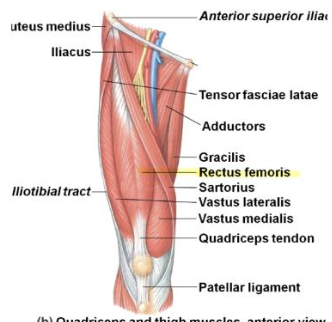
Rectus Femoris - Flexor
I
quad tendon

Rectus Femoris - Flexor
N
Femoral nerve (L2, L3)
may receive a branch from obturator nerve
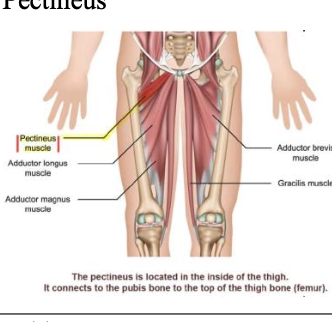
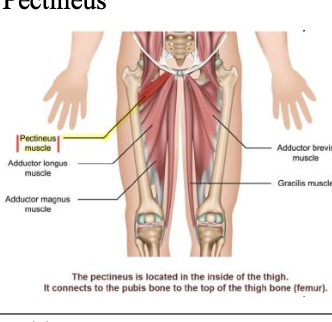
Pectineus - Adductor
O
superior ramus of pubis
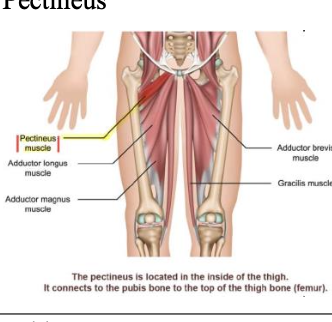
Pectineus - Adductor
I
pectineal line of femur, just inferior to lesser trochanter
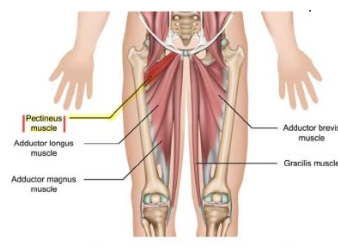
pectineus - adductor
N
femoral nerve (L2, L3)
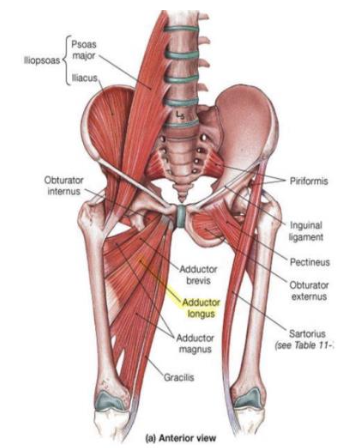
Adductor Longus - Adductor
O
Body of pubis inferior to pubic crest
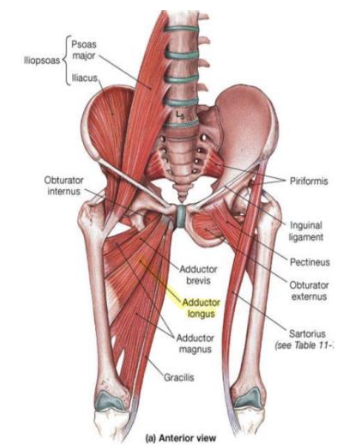
Adductor Longus - Adductor
I
middle third of linea aspera of femur
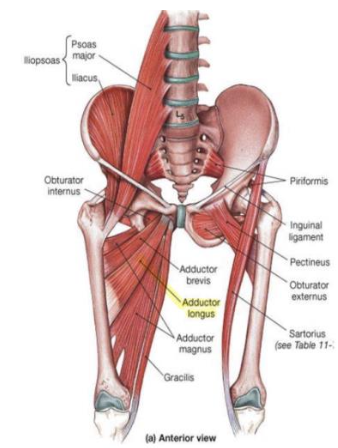
Adductor Longus - Adductor
obturator nerve and branch of anterior division (L2, L3, L4)
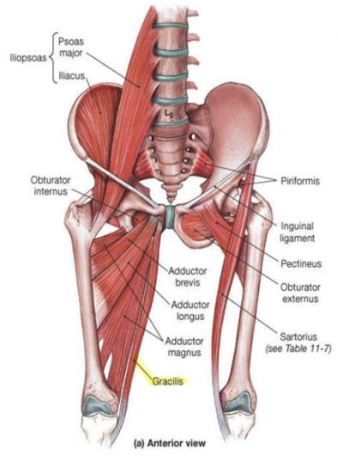
Gracilis - Adductor
O
body and inferior ramus of pubis
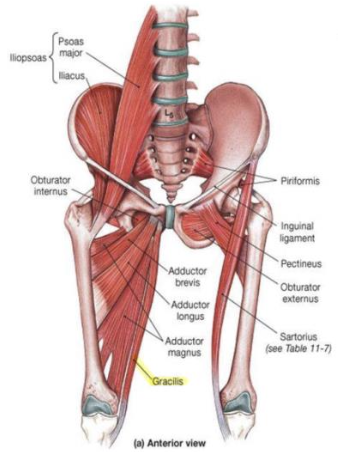
gracilis - adductor
I
superior part of medial surface of tibia (as part of pes anserinus)
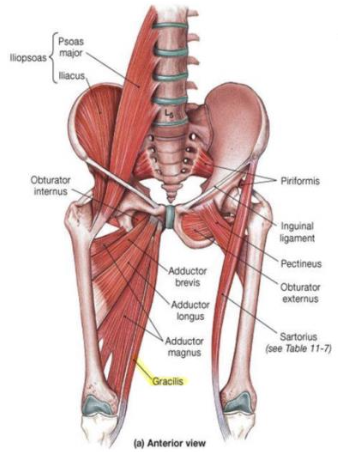
Gracilis - adductor
N
obturator nerve (L2, L3)
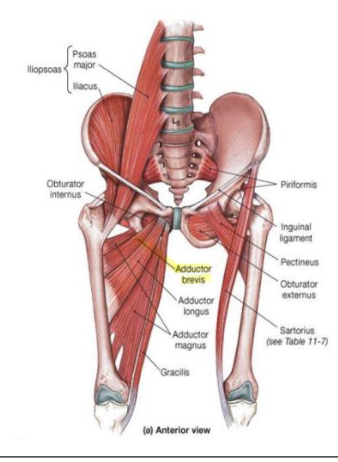
adductor Brevis - adductor
O
body and inferior ramus of pubis
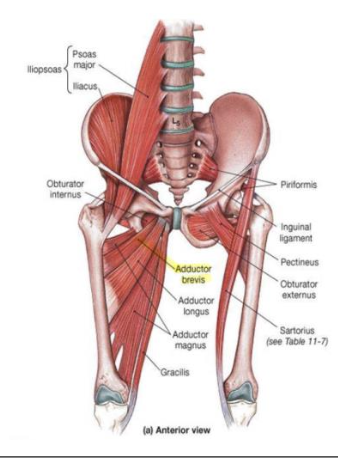
adductor brevis - adductor
I
pectineal line and proximal part of linea aspera of femur
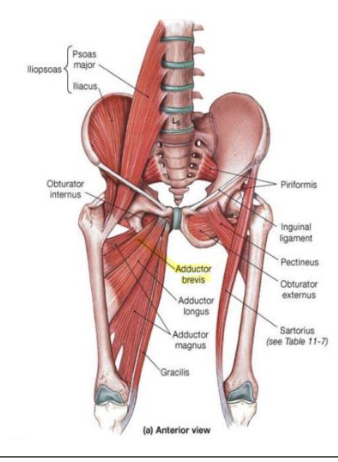
adductor brevis - adductor
N
obturator nerve and branch of anterior division (L2, L3, L4)
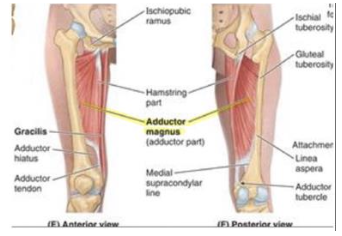
Adductor magnus - adductor
O
adductor part: inferior ramus of pubis and ramus of ischium
hamstring part: ischial tuberosity
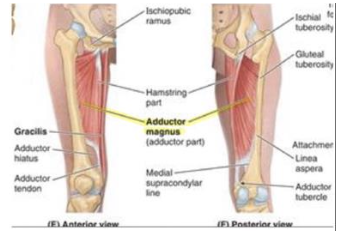
adductor magnus - Adductor
I
adductor part: gluteal tuberosity, linea aspera, and medial supracondylar line
hamstring part: adductor tubercle of femur
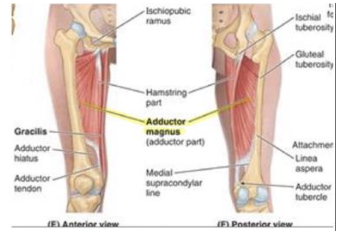
adductor magnus - adductor
N
adductor part: obturator nerve (L2, L3, L4) and branches of posterior division
hamstring part: tibial part of sciatic nerve (L4)
Gluteus Maximus - extensor
O
Ilium posterior to posterior gluteal line, dorsal surface of sacrum and coccyx, and sacrotuberous ligament
Gluteus Maximus - extensor
I
Most fibers end in the iliotibial tract, which inserts into the lateral condyle of the tibia; some fibers insert on the gluteal tuberosity
Gluteus Maximus - extensor
N
Inferior gluteal nerve (L5, S1, S2)
Biceps Femoris (Long Head)
O
Ischial tuberosity
Biceps Femoris (Long Head)
I
Lateral side of the head of the fibula
Biceps Femoris (Long Head)
N
Tibial division of sciatic nerve (L5, S1, S2)
Anterior Pelvic Tilt force couple muscles
hip flexors and lumbar extensors
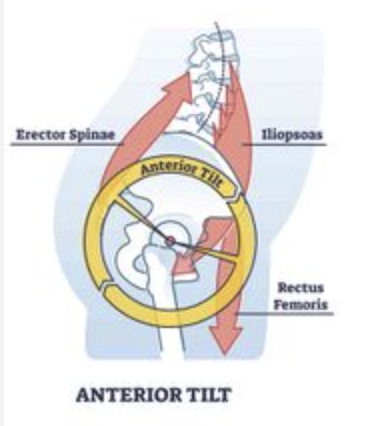
How does the anterior pelvic tilt force couple work?
Hip flexors rotate the pelvis anteriorly; back extensors pull in the opposite direction, creating a force couple around the M-L axis.
What muscles create the force couple for posterior pelvic tilt?
hip extensors and abdominals
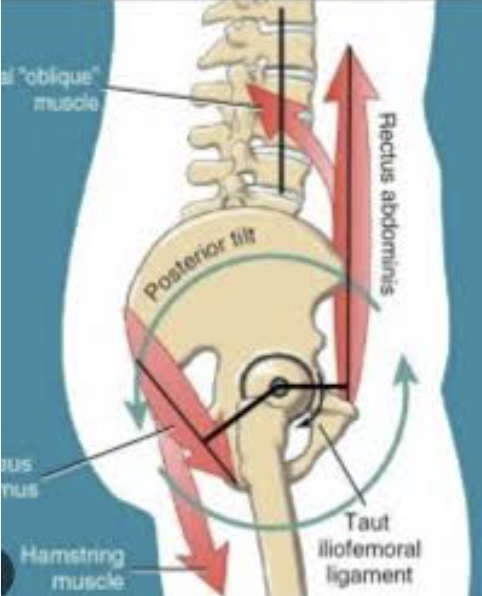
What limits posterior pelvic tilt?
hip flexors and capsular ligaments
What effect does posterior pelvic tilt have on lumbar lordosis
It reduces lumbar lordosis
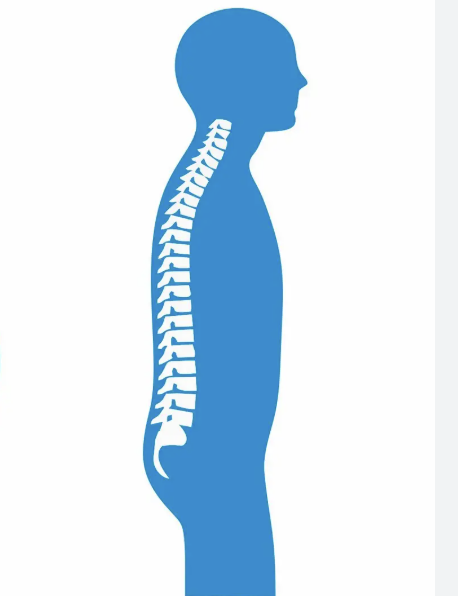
Which hip adductor acts as a hip extensor regardless of joint position?
The posterior fibers of the adductor magnus
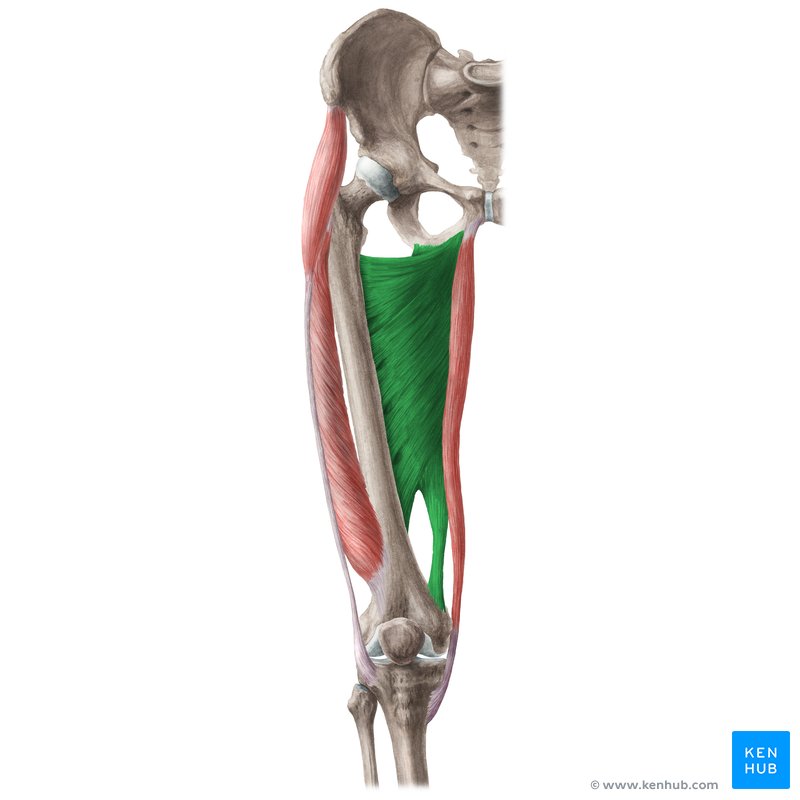
What happens to the torque potential of most adductors within 40–70° of hip flexion?
Their torque potential decreases
When do the adductors have better leverage for flexion or extension?
Outside of 40–70° of hip flexion
What happens outside the 40–70° arc of hip flexion?
Adductors have better leverage for either hip flexion or extension.
How do adductors behave near full hip flexion?
They are mechanically prepared to extend the hip.
How do adductors behave near full hip extension?
They are mechanically prepared to flex the hip
What happens to internal rotators when the hip is flexed to 90°?
Their torque potential increases due to a longer internal rotation moment arm.
Why do internal rotators become more effective at 90° hip flexion?
Muscles like glute medius and minimus shift from a parallel to perpendicular line of force relative to the AOR, increasing their leverage.
What happens to some external rotators at ~60° of hip flexion?
They switch function and begin acting as internal rotators
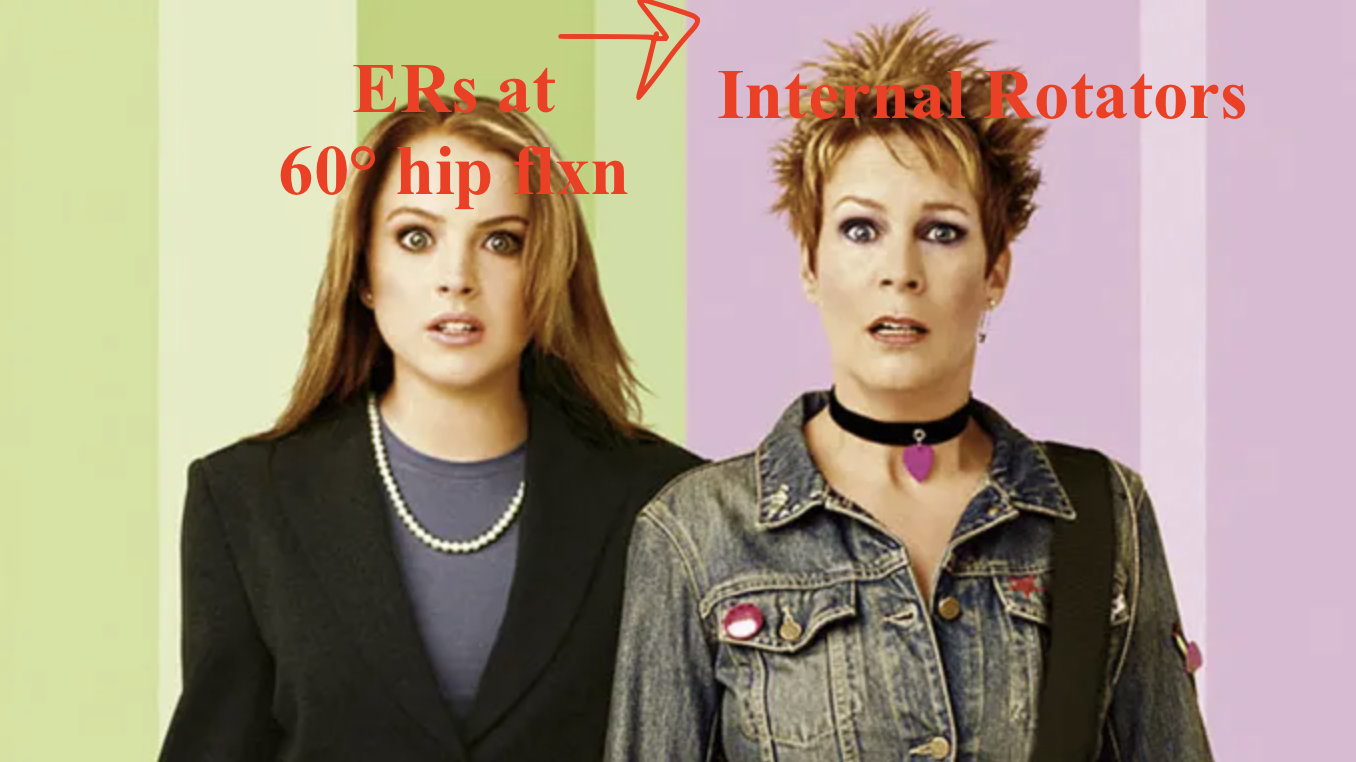
Which muscle group is most active in resisting a forward lean in standing?
Hamstrings
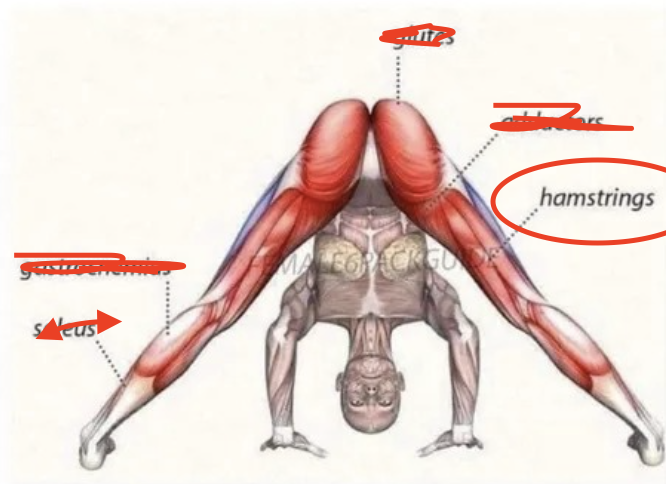
Why do hamstrings resist forward lean more than glute max?
Forward lean increases hamstring’s moment arm and decreases glute max’s, making hamstrings more mechanically effective
Why does the nervous system favor hamstrings over glute max during forward lean?
It holds glute max in reserve for powerful extension activities.
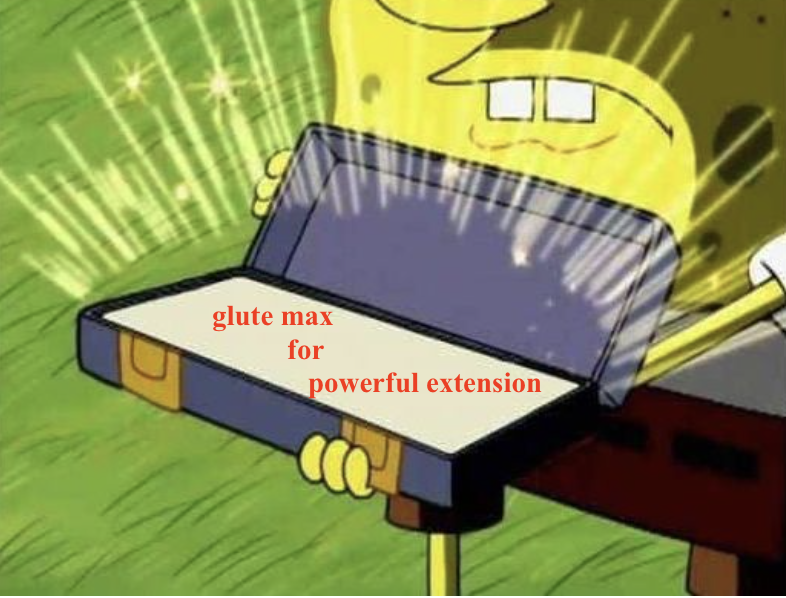
Which plane has the greatest overall torque potential at the hip?
Sagittal plane
What is the torque potential order of hip muscle groups from greatest to least?
Greatest to least torque potential:
Extensors > Flexors (Sagittal)
Adductors > Abductors (Frontal)
Internal rotators > External rotators (Horizontal)
ext > flx > add > abd > IR > ER
EFDBIE
Existential Fcking Dilemma! Benjamin Is Exploding
